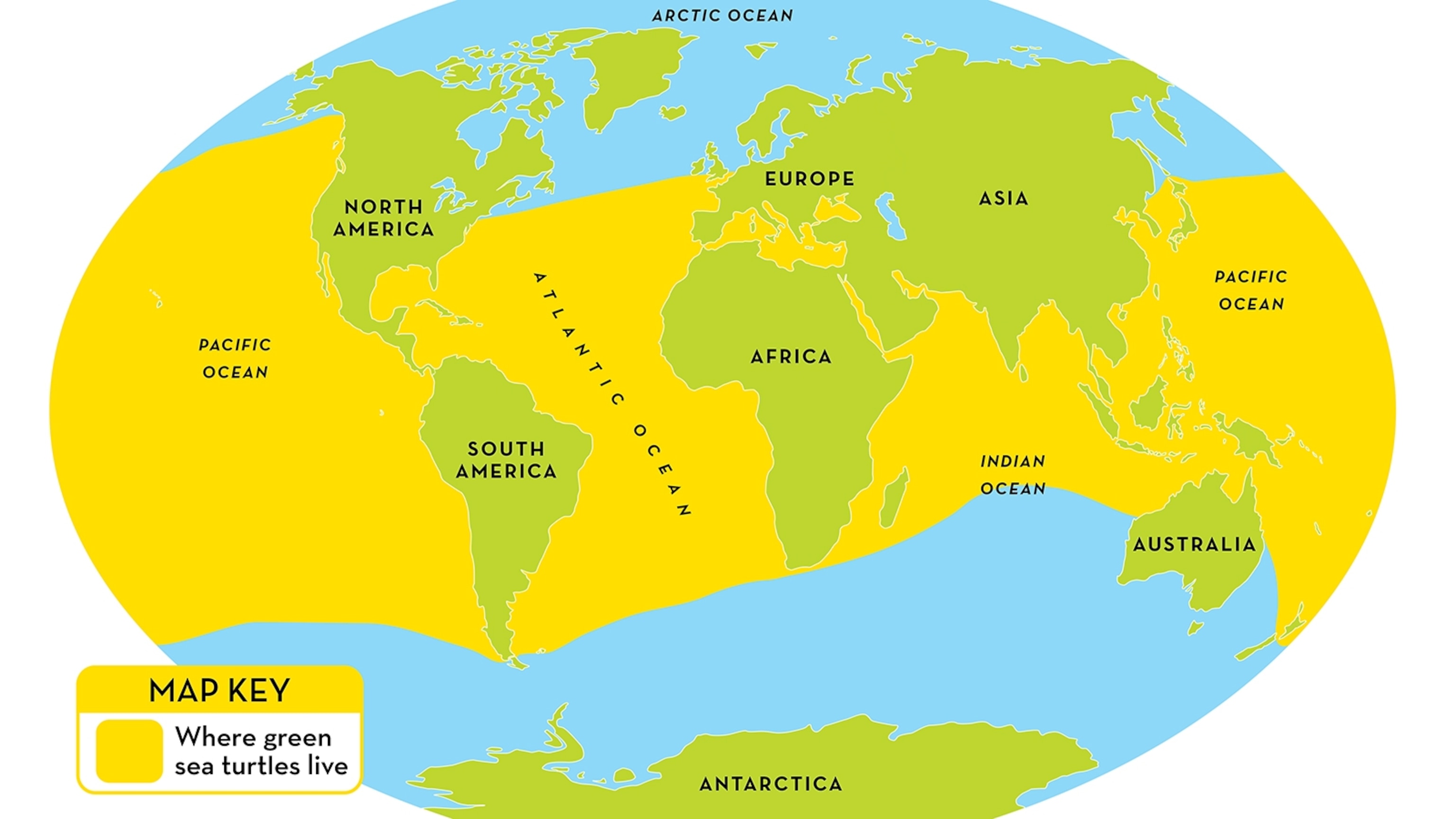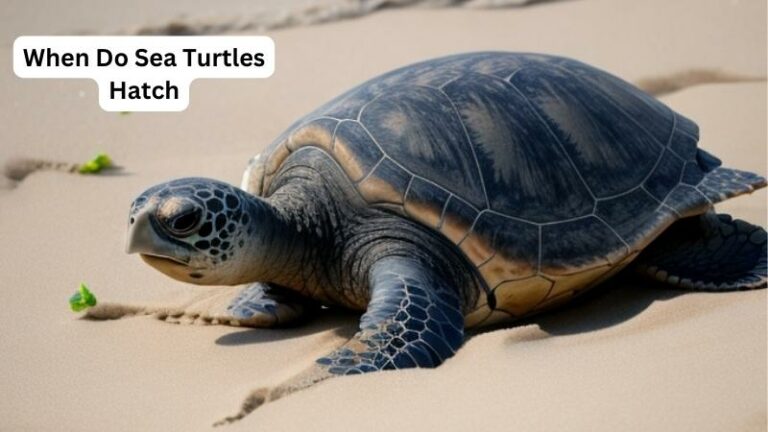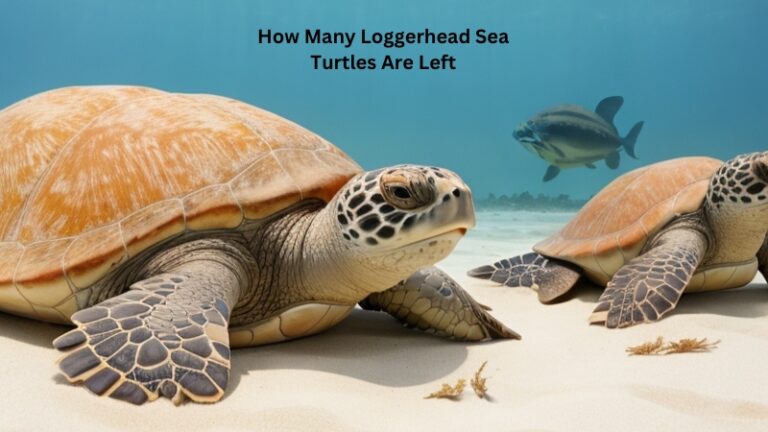Map Of Where Sea Turtles Live
Welcome to the fascinating world of sea turtles! Have you ever wondered where sea turtles live? Well, get ready to explore their oceanic homes with me as we dive into the topic of “map of where sea turtles live.”
Sea turtles are incredible creatures that inhabit various oceans around the globe. In this article, we’ll uncover the different regions across the world where these marvelous marine reptiles call home.
From the tropical waters of the Caribbean to the coral-rich habitats of the Great Barrier Reef, sea turtles have quite the extensive range of habitats. So grab your imaginary snorkel and let’s embark on an exciting journey to discover the map of where sea turtles live!

Exploring the Map of Where Sea Turtles Live
Sea turtles are fascinating creatures that have captured the curiosity and admiration of people all around the world. Their migratory patterns and habitats are of particular interest to scientists, conservationists, and nature enthusiasts. In this article, we will delve into the map of where sea turtles live, exploring their nesting grounds, feeding areas, and migration routes. Join us as we embark on a journey to uncover the secrets of these magnificent creatures and gain a deeper understanding of their lives.
The Nesting Grounds: A Sanctuary for Sea Turtles
Sea turtles exhibit an incredible nesting behavior, returning to the same beaches where they were born to lay their own eggs. These nesting grounds play a crucial role in the survival of sea turtle populations, as they provide a safe and suitable environment for the eggs to incubate. The beaches of the Caribbean, Southeast Asia, and the shores of the Indian Ocean are well-known hotspots for sea turtle nesting. The warm sands and ample food sources near these areas make them ideal for the turtles to carry out their reproductive rituals.
Once a female sea turtle has reached maturity, usually between the ages of 20 and 30, she will swim hundreds, or even thousands, of kilometers to reach her nesting grounds. Using their unique ability to sense the Earth’s magnetic field, sea turtles navigate with remarkable precision to return to the exact beach where they hatched. The nesting process is a delicate and demanding one, as the female digs a hole for her eggs and carefully deposits them, covering them with sand before returning to the water. These nesting grounds are protected areas in many countries, where efforts are made to preserve and conserve these invaluable habitats.
Feeding Areas: A Bounty of Food in the Sea
While the nesting grounds are crucial for the survival of sea turtles, their feeding areas are equally important. Sea turtles are predominantly herbivorous, with some species having a more varied diet that includes jellyfish, crustaceans, and even small fish. The choice of feeding areas depends on the turtle species and their dietary preferences. Some sea turtles, such as the green sea turtle, are commonly found in seagrass meadows and coastal areas, where they graze on the lush vegetation. Other species, like the hawksbill turtle, are more commonly seen near coral reefs, feeding on sponges and other invertebrates that thrive in these ecosystems.
The feeding areas of sea turtles can be found in various locations across the globe. The Great Barrier Reef in Australia, the Galapagos Islands in Ecuador, and the waters of Hawaii are just a few examples of the rich feeding grounds that sea turtles frequent. These areas not only provide an abundant food source for the turtles but also offer protection and shelter from predators. It is crucial to protect these habitats and ensure that they remain healthy to sustain the sea turtle populations.
Nesting Grounds: The Caribbean’s Treasures
The Caribbean is home to some of the most important nesting grounds for sea turtles in the world. The warm turquoise waters and sandy beaches provide an ideal environment for the turtles to lay their eggs. Countries such as Costa Rica, Mexico, and the Turks and Caicos Islands have designated protected areas where nesting sea turtles are closely monitored and conservation efforts are actively undertaken. These efforts include reducing light pollution, implementing strict regulations to prevent disturbances during the nesting season, and educating local communities and tourists about the importance of preserving these habitats.
The region is particularly significant for the hawksbill turtle, a critically endangered species that relies on the Caribbean’s coral reefs for both nesting and feeding. These stunning reptiles play an essential role in maintaining the health and balance of these fragile ecosystems. By protecting the nesting grounds in the Caribbean, we can contribute to the conservation of not only the sea turtles but also the entire marine biodiversity that relies on these habitats.
Feeding Grounds: The Rich Waters of Australia’s Great Barrier Reef
Australia’s Great Barrier Reef is a world-renowned UNESCO World Heritage Site and a vital feeding ground for various sea turtle species. The abundant seagrass meadows found in the shallow coastal waters are a haven for turtles, providing a nutritious and easily accessible food source. The green sea turtles, in particular, thrive in these feeding areas, sometimes consuming up to two kilograms of seagrass per day.
Efforts to protect these feeding grounds and the numerous sea turtle species that rely on them are paramount. Conservation projects focus on minimizing pollution, reducing habitat destruction, and raising awareness among the local communities and visitors about the importance of sustainable practices. By safeguarding the health of the Great Barrier Reef, we can ensure the continued survival of its mesmerizing inhabitants, including the beloved sea turtles.
The Migratory Highways: Incredible Journeys Across Oceans
Sea turtles are known for their remarkable ability to undertake long-distance migrations across vast oceanic expanses. These migratory journeys play a vital role in the life cycle of these animals, allowing them to find food, mate, and ultimately return to their nesting grounds. The migratory patterns of sea turtles differ among species, but they all exhibit a fascinating navigational prowess.
One of the most awe-inspiring migratory journeys is undertaken by the leatherback turtle. These majestic creatures embark on transoceanic travels, covering distances of thousands of kilometers. Their migration routes often span across the Atlantic Ocean, from the nesting grounds in the Caribbean to the feeding areas in the northern part of the ocean. These migrations are perilous, as the turtles face numerous threats from pollution, fishing gear, and climate change. Protecting these migratory corridors is essential for the survival of these ancient creatures.
Whether it’s the nesting grounds in the Caribbean, the feeding areas of the Great Barrier Reef, or the migratory highways across the oceans, the map of where sea turtles live encompasses some of the most breathtaking and fragile ecosystems on our planet. As we explore and discover more about these habitats, it becomes increasingly vital to work together to protect them. By supporting conservation efforts and raising awareness about the importance of preserving these areas, we can ensure a future where sea turtles continue to grace our seas and inspire generations to come.
Key Takeaways: Map of Where Sea Turtles Live
- Sea turtles can be found in oceans all around the world.
- They live in both warm and cold waters.
- Some sea turtle species, like the green sea turtle, live in coastal areas.
- Other species, like the loggerhead sea turtle, migrate long distances for feeding and nesting.
- Sea turtles are most commonly found in tropical and subtropical regions.
Frequently Asked Questions
Sea turtles are fascinating creatures that inhabit various parts of the world’s oceans. Here are some commonly asked questions about where sea turtles live.
1. Which oceans do sea turtles call home?
Sea turtles can be found in almost every ocean in the world. Some species have a broader distribution, such as the green sea turtle, which can be found in tropical and subtropical waters of the Atlantic, Pacific, and Indian Oceans. Other species, like the loggerhead sea turtle, are more confined to specific regions, like the Mediterranean Sea, North Atlantic Ocean, and North Pacific Ocean.
Overall, sea turtles have a vast range and can be found in warm and temperate waters around the globe, from the coastlines of Florida and Australia to the waters surrounding Indonesia and Costa Rica.
2. Do sea turtles migrate long distances?
Yes, sea turtles are known for their impressive migration journeys. Some species, like the leatherback turtle, embark on incredible migrations that span thousands of miles. For example, leatherbacks nesting in the beaches of Indonesia may travel to feeding grounds near California, a journey of over 6,000 miles. These migrations allow sea turtles to find food, mate, and lay their eggs in different areas, contributing to the overall health and survival of their populations.
Migration patterns can vary between species and even individuals within a species, but it is a fascinating aspect of their behavior that showcases their remarkable navigational abilities.
3. Can sea turtles live in cold waters?
Most sea turtles prefer warmer waters, as they are ectothermic creatures that rely on external sources of warmth to regulate their body temperature. However, some species, like the Kemp’s ridley sea turtle, can tolerate colder waters. During winter months, Kemp’s ridley turtles inhabit the Gulf of Mexico, including the coastlines of Texas and Mexico, where water temperatures can drop below 50 degrees Fahrenheit.
It’s important to note that while sea turtles may be able to survive in colder waters for short periods, long exposure to cold temperatures can be detrimental to their health. They are better suited for the warmer tropical and subtropical waters where their main food sources, like seagrass and jellyfish, are more abundant.
4. Do sea turtles prefer certain types of habitats?
Yes, sea turtles have specific habitat preferences depending on their life stage. Hatchlings, for example, prefer to stay close to the shore and in shallow, protected waters, where they can find plenty of food and avoid predators. As they grow, they venture further into the open ocean.
Adult sea turtles, on the other hand, inhabit various habitats depending on the species. Some prefer coral reefs, feeding on sponges and jellyfish, while others prefer seagrass beds, munching on seagrass leaves. Sea turtles also frequent areas with rocky outcrops, sandy beaches for nesting, and even estuaries where freshwater meets the sea.
5. Are there specific places where sea turtles gather to mate and lay eggs?
Yes, sea turtles typically return to specific beaches to lay their eggs, a behavior known as natal homing. Different species have different nesting sites. For example, the Olive ridley sea turtle mass-nests on the beaches of Mexico and Costa Rica, with thousands of females coming ashore simultaneously to lay their eggs. Other species, like the hawksbill turtle, have more scattered nesting locations throughout the tropics.
These nesting beaches provide suitable conditions for the eggs to develop and hatch. Conservation efforts often focus on protecting these nesting sites to ensure the survival of future generations of sea turtles.
Summary
Sea turtles live in different parts of the world and are found in both warm and cold waters. They can be seen in oceans like the Pacific, Atlantic, and Indian. Some sea turtles even travel long distances to lay their eggs on beaches.
Protecting sea turtles and their nesting sites is important because they are endangered due to pollution, habitat destruction, and being caught in fishing gear. By creating awareness and implementing conservation measures, we can help ensure the survival of these amazing creatures for future generations to enjoy.

